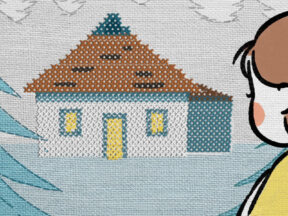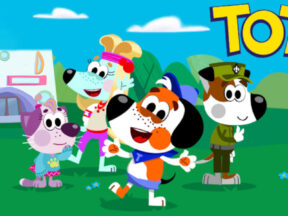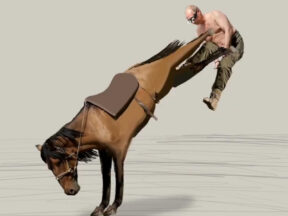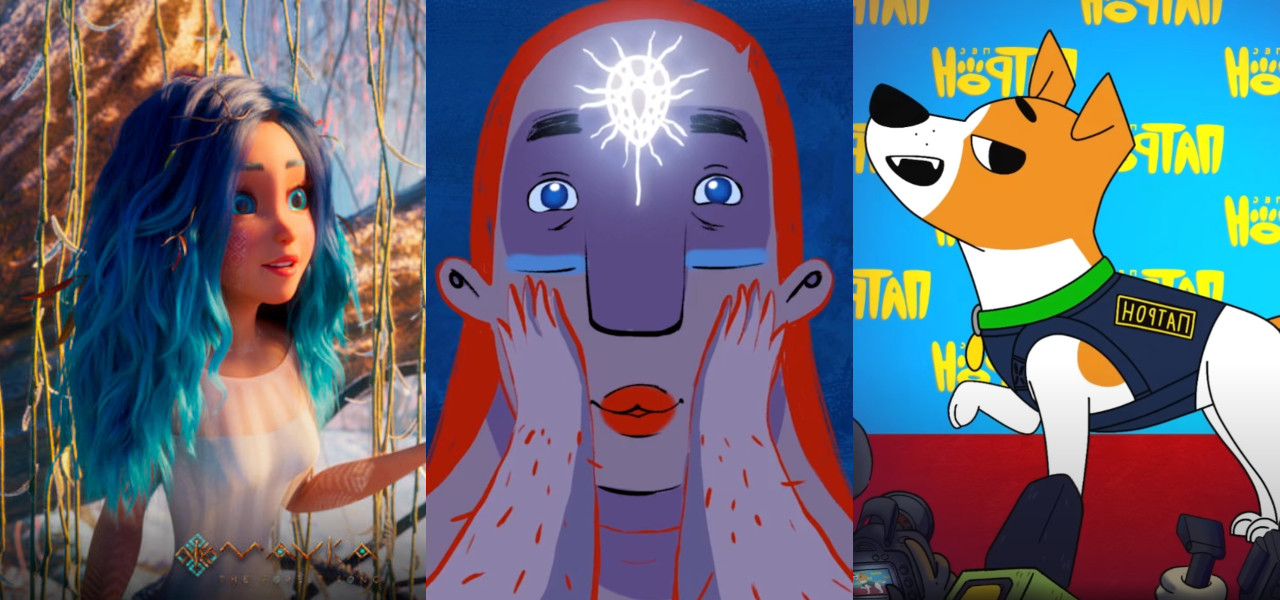
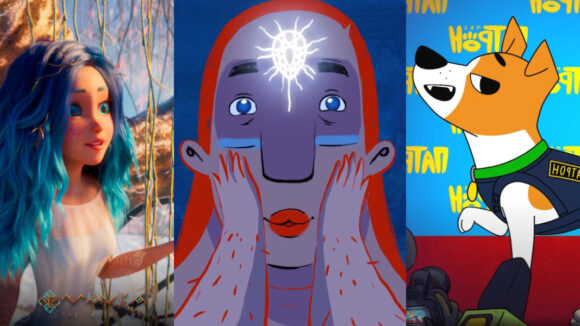
Nowhere to Go But Up: Ukraine Animation Carries On Two Years After Russian Invasion
The animation community, particularly in North America, loves to complain. Even in good times, you’ll hear moans and groans about this, that, and the other thing. Now, some of those complaints are certainly valid when you toss in a pandemic, an economic downturn, and an industry that has overreached so far with streaming content that a collapse was inevitable (how quickly people forget the ‘dotcom’ years).
But imagine being an animator in Ukraine, where they faced those same challenges on top of a 10-year war with Russia that turned into a full-scale invasion on February 24, 2022. Incredibly, you don’t hear much complaining from that community. They’re too busy trying to stay alive while hosting festivals, workshops, screenings, and producing feature films, online series, and short films.
Before February 2022
Prior to 2022, the Ukrainian animation community was not exactly thriving, but it was progressing. The Ukrainian State Film Agency funded shorts, features, and series. “The state gave grants for short independent films, not as large as in Europe, but considering that life was cheap in Ukraine at that time, these funds were more than enough,” says animator and artist Mykyta Lyskov (Deep Love, 2019). “Once a visa-free regime was introduced, creative people began to travel to Europe and became imbued with new ideas, reflected in the quality of their films.”
Aside from a smattering of independent animators, studios were also working on features and assorted commercial projects. While co-productions are a rarity (Brave Bunnies, among the few), Ukrainian artists worked on the international features Loving Vincent and The Peasants. The country’s gaming industry has also been relatively strong.
“I don’t think you can say that there was or is a strong animation community here,” says Anastasiya Verlinska, director of the Linoleum Contemporary Animation and Media Art Festival in Kyiv. “Ukraine is pretty big, and it’s hard for people to get together. We have to attract buyers here for both the gaming and the animation industries. We have a lot of talented artists and companies that can develop a project; however, that was not enough to hold an industry event focusing only on animation here. Before the invasion, we did one about commercials, but that is a rare case.”
During the Invasion
It’s astonishing and quite a testament to the determination and fearlessness of the Ukrainian animation community that in the midst of war, they’ve produced an online TV series (Patron Dog), a feature film (Mavka: The Forest Song, 2023), various short films (even if some were made abroad), and held assorted workshops, lectures, and festivals.
In 2022 and 2023, Verlinska organized tours and workshops across Ukraine (including the western part, where most displaced people now find themselves).
“Art is a great distraction and opportunity to reflect on what you are going through, so that was the main reason to do it,” says Verlinska. “I did go to some cities; they are not that far away from the front line, but life there is no different from life in, let’s say, ‘safer’ cities. Seeing destruction or damage always hurts, but it’s also a reminder that you must not stop.”
In 2022, the Linoleum festival took place online and offered some in-person screenings in Kyiv, Kharkiv, and Chernivtsi. “We didn’t get any funding in 2022,” says Verlinska. “The only thing that saved us was the grant money we received from the British Council and donations from foreign colleagues. It was not a lot of money, but that was enough to make it the basis of the festival.”
Beginning in 2023, the festival returned to an in-person format. International guests were invited as well, though some feared attending or were not permitted by their employers. Keeping the festival online would have made sense, but Verlinska didn’t feel that was the right call.
“I think that people can adjust to anything, and we adjusted to Covid somehow. And yes, there is a war, but we adjusted to it again,” she explains. “People want to see each other, and when there is some kind of cataclysm, you have to have some rituals or routines to keep you sane. This festival for me is also an opportunity to meet the people I really miss.”.
Nearby, the Dovzhenko Centre, Ukraine’s film archive, has also continued hosting events and found that Ukrainian animation has been more in demand than ever.
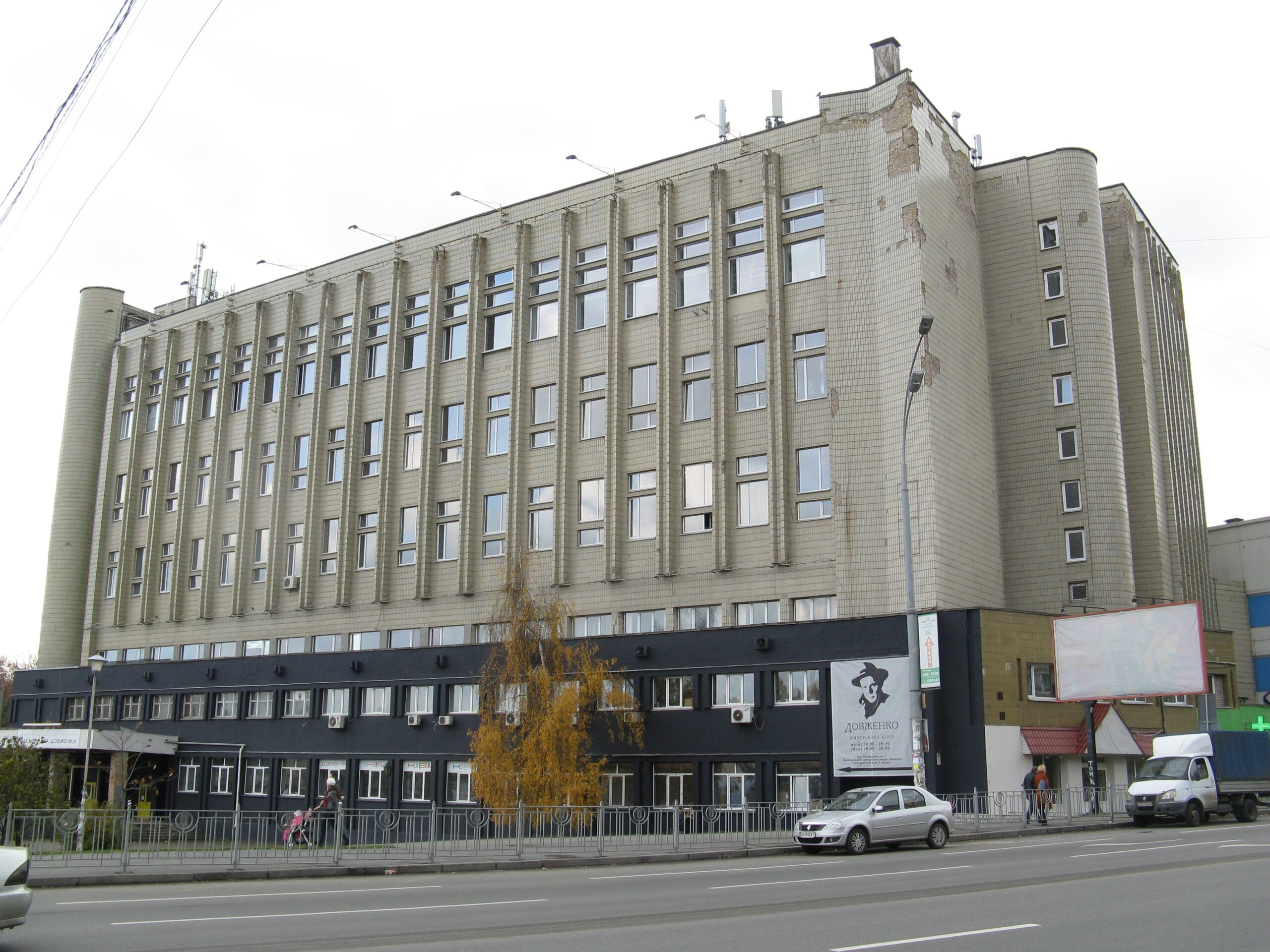
That reality almost became impossible when the Russians started their full invasion in 2022. “On the first day of the invasion, fragments of a Russian missile fell near the Dovzhenko Centre and damaged the building, says Oleh Olifer, communications manager and animation expert. “Fortunately, the film collection was secured. These missile fragments are preserved in the collection of the Dovzhenko Centre Film Museum now. The invasion affected the lives of our colleagues very much. Some of them were drafted into the Ukrainian army, and some left the country. Also, the financial stability of our institution is still at risk.”
Despite these serious obstacles, the Dovzhenko Centre has continued to hold screenings and lectures, with animation as a primary focus. The Centre even developed an online course, “A Brief History of Ukrainian Animation.”
“The demand for Ukrainian animation increased significantly after the invasion,” says Olifer’s colleague and fellow film scholar, Aliona Penzii. “We organized several retrospective programs nationally and internationally dedicated to children’s animation, censorship and propaganda in animation, feminist themes, and others.
In terms of production, the online series Patron Dog (created by Sasha Ruban) debuted in January 2023. The series is based on a real Ukrainian dog whose job it is to sniff out landmines. Patron became famous after the 2022 invasion when President Volodymyr Zelenskyy awarded the canine the Order of Courage for his work. After a series of books and comics were created featuring Patron, an animated series was launched to teach children about mine safety and mental health.
“The first season of the series was launched in January 2023 and already has over 20 million views on Youtube alone,” says executive producer Julia Grebeniovska. “Despite working during blackouts, the team managed to deliver all episodes on time. The team, affected by the war, cannot gather in a single office and works online, coordinating across different time zones, a practice that began during the Covid-19 pandemic.”
In production for seven years, the animated feature Mavka: The Forest Song (based on a 1918 Ukrainian poem) was released in Ukraine in March 2023, where it broke box office records. The film has since been shown in 148 countries. Incredibly, the production (co-produced by Animagrad Animation Studio and FILM.UA) was delivered on schedule despite the full-scale invasion. Given the Ukrainian content and the film’s message of peace and love, it was especially symbolic that the project was completed as the country was being attacked.
“It took the studio several days since the start of Russia’s full-scale war against Ukraine to reorganize the production process and continue its work,” says Yana Medvedieva, CEO of Animagrad (FILM.UA).
After the film was completed, the Mavka crew put together a unique video featuring many members of the team discussing the incredible challenges they faced (working from a bomb shelter, displacement from homes, enlistment, and artists trapped in Russian-occupied Ukrainian territories) as they raced towards their production deadlines.
Independent animator Anna Dudko (Deep Water, 2021) was the recipient of a residency in Vienna in the spring of 2022. “I was in Kyiv when the full-scale war began. I heard explosions and shooting outside the window and was really scared, so the next day I put my most valuable things—my graphic tablet and a laptop—in a suitcase and left the city, evacuating to my parents’ village, not far from Kyiv, to the west. I spent two weeks there not feeling safe, but I didn’t know where to go next.”
Dudko then heard of residencies for Ukrainian animators being held in Austria. She applied and was invited to stay in Vienna from March 2022 to May 2023. “I was afraid to go abroad alone and leave my family,” says Dudko. “When I got on the train, I thought that this might be the last time I saw my loved ones. Upon my arrival in Vienna, I finally breathed a sigh of relief, but I couldn’t draw at all for a month. My fingers were numb, and my imagination was frozen. But gradually, thanks to all the support and empathy around me, I melted and began to think about what to do at the residence.”
Dudko initially wanted to avoid making a film about war but quickly realized she had no choice. “I had a strong need to reflect on painful experiences. That’s how I started creating my film, Mokosh. With this film, I wanted to speak to those whose worlds had been damaged and destroyed by this aggressive invasion. I wanted to concentrate not on weakness but on inner strength, on the drive for life, and on the ability to create the world as you want it to be. Making my film was really therapeutic for me.”
Meanwhile, Mykyta Lyskov got involved with two very different initiatives. During the invasion, a new faculty, Audiovisual Art and Production, was started at the College of Arts in Dnipro. Since September 2022, Lyskov has been teaching classes on dramaturgy and the history of animation. “It’s not easy,” admits Lyskov. “When the attack of Russian missiles begins and the siren sounds, my student and I have to go to the basement bomb shelter, and there I continue the lecture or cancel classes.”
During this period, Lyskov started thePutler Kaput challenge, a sort of anijam inviting animators to vent their frustration on Vladimir Putin in 10-second animated segments.
“In the first days of the Russian invasion, I was filled with anger and powerlessness towards Russia, and in particular towards Putin,” says Lyskov. “I started making small sketches about Putin’s death. They quickly gained popularity on the internet. I realized the Ukrainian audience needed such content and began asking my friends to draw similar videos.”
One of the first participants was Estonian animation legend Priit Pärn, who did a bit showing Putin turning into a turd.
“During the invasion, Olga and Priit Parn gave me a lot of help and support,” says Lyskov. “Thanks to the Pärns, my new script received funding from Estonia, and for almost a year now, I have been working remotely as a director at the Joonisfilm studio. This work saved my psyche.”
After the Invasion
When this war finally ends, what will happen to an animation community that was just starting to find its legs and potential? Many animators have left the country, and there are concerns that these people won’t return.
“Lots of people, especially those who worked on big projects on features here and have enough experience, were easily taken by big studios abroad,” says Verlinska. “Stop motion is almost gone in Ukraine. We might have 10 stop-motion artists around still, but that’s it. The situation is not good.”
While some artists will eventually return after the war ends, others, with families, jobs, and stability, will likely stay abroad. “I don’t see the reason for them to come back, to be honest,” adds Verlinska. “I think those who wanted to come back have already returned.
Given the state of Ukrainian animation, there might not be a reason to return for many. “The industry was struggling before, but we had financing,” says Verlinska. “We had possibilities. We were able to pay for our presence at international festivals. It was not a rapid development, but we were progressing. Now, we need to come up with another plan.”
Grebeniovska agrees: “To bring back all these talented people, we need to create a market, lots of projects, and especially competitive projects both in terms of ideas and budgets. Because even with large budgets (Patron‘s animation is paid at the level of European studios), we need to provide them with a continuous flow of interesting projects, thanks to which they can go to festivals and proudly show off their work.”
Yana Medvedieva believes that keeping national talent has always been an issue for the industry. “Many professionals who attained a high level of qualification would get jobs in large studios abroad and leave. We constantly had to put in effort and expend our own resources to cultivate new specialists. With the onset of a full-scale invasion, we lost many professionals in a relatively short period of time. A significant reason for this is the simplified employment system, for example, in studios in Canada and the U.S.”
With most of these people unlikely to return after the war, Medvedieva believes there is only one option: “To intensively develop animation schools and, on the other hand, work towards providing competitive conditions for cooperation and increasing the number of job opportunities.”
“Before the full-scale invasion,” says Anna Dudko, “I was optimistic about my future in Ukraine. There was state funding. I thought that my colleagues and I would be able to make many more films. But Russia’s invasion destroyed our plans. Animation studios stopped working, and many artists went abroad, probably forever. Other artists joined the army to defend our country, and many of them have already been killed. Now, I’m stuck and not sure about my future. But I’m still holding on to my desire to grow in animation and am trying to explore some possible ways to continue making films in this new reality.”
Strangely, the full-scale invasion has generated some new potential opportunities for the Ukrainian animation community as well. While the world’s eyes have been diverted since October 7, 2023, towards Gaza, prior to that, there was a lot of focus and support for Ukrainian animators and films. Mavka and Patron the Dog are now being seen by audiences around the world. USAID has been providing grant money for projects, while UNICEF has been helping to find additional funds. International festivals have invited Ukrainian animators and held Ukrainian animation retrospectives.
“People have come to know about us,” adds Grebeniovska. “Here you are writing this article, which you might not have done before.”
Thanks to all the participants, particularly Anastasyia Verlinska, for recommending the interviewees and setting up initial contact.
Pictured at top: Mavka: The Forest Song, Deep Water, Patron Dog

.png)
